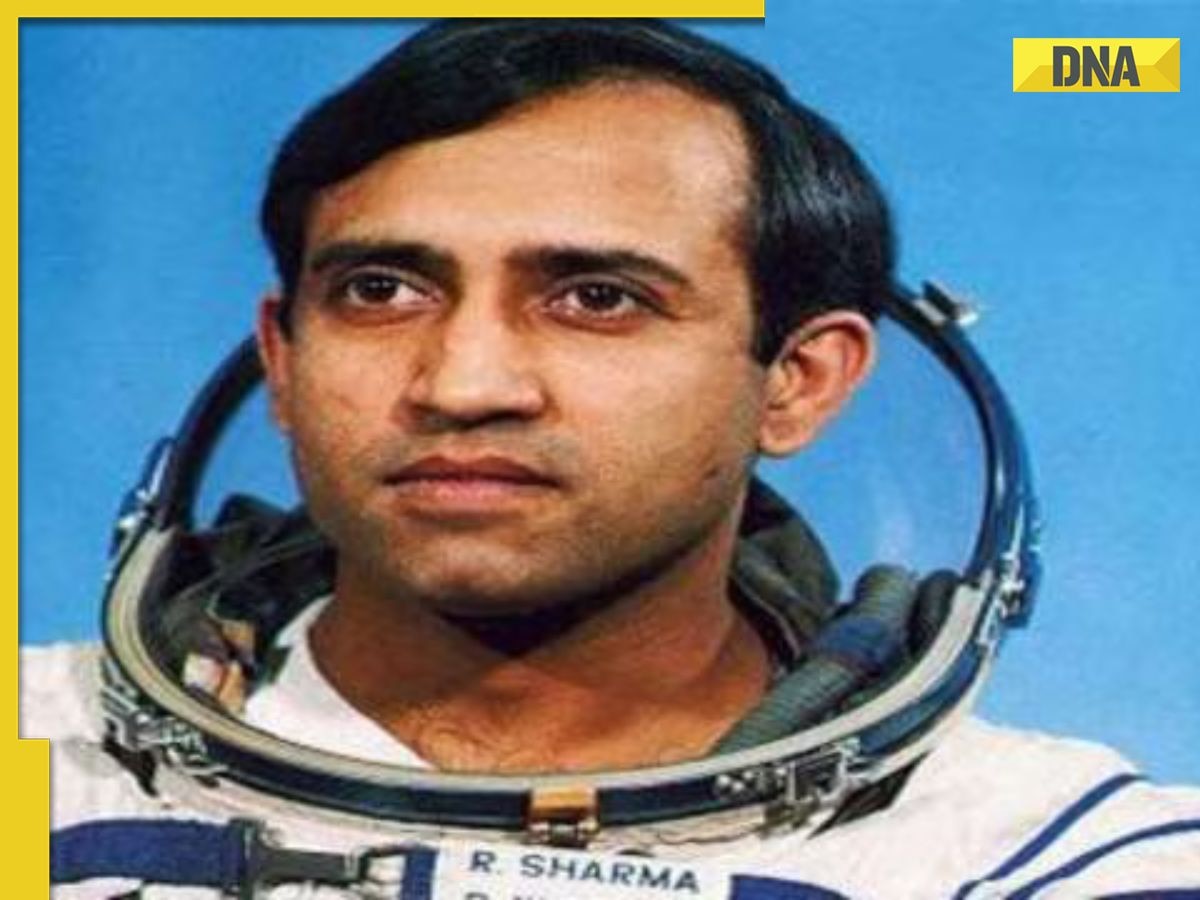Rakesh Sharma: Tracing The Path Of India's First Man In Space

Table of Contents
Early Life and Education of Rakesh Sharma
Rakesh Sharma's journey to the stars began not in a laboratory, but in a small town. Born on January 13, 1949, in Patiala, Punjab, his early life laid the foundation for his future achievements. His family background, while not explicitly documented in readily available public sources, likely instilled in him a strong sense of discipline and ambition. His education, however, is well-documented, highlighting a keen interest in science and a steadfast dedication to his goals. Sharma's exceptional academic performance led him to pursue a career in the Indian Air Force.
- Birthdate and birthplace: January 13, 1949, Patiala, Punjab, India.
- Educational institutions attended: Details on the specific educational institutions attended by Rakesh Sharma require further research and may not be widely available in English sources. However, his academic excellence is well-established, paving his path toward a career in the highly selective Indian Air Force.
- Key achievements during his time in the Indian Air Force: Rakesh Sharma distinguished himself as a highly skilled pilot within the Indian Air Force, showcasing exceptional piloting skills and a deep understanding of aeronautics. His exemplary performance made him a prime candidate for the rigorous astronaut selection process.
- Selection process for the space mission: The selection process for the Indo-Soviet space program was highly competitive, demanding not only physical prowess and mental resilience but also a deep understanding of aerospace engineering and scientific principles. Sharma's exceptional qualifications and dedication allowed him to stand out among a pool of highly qualified candidates.
Selection and Training for the Soyuz T-11 Mission
The Indo-Soviet space program, a landmark collaboration, paved the way for Rakesh Sharma's historic journey. His selection was a testament to his exceptional capabilities and India's growing partnership with the Soviet Union in the realm of space exploration. The training he underwent in the Soviet Union was nothing short of grueling, pushing his physical and mental limits to the absolute maximum.
- Training locations and methodologies: Rakesh Sharma's training took place primarily in the Soviet Union, at facilities renowned for their advanced astronaut training programs. The training involved a rigorous blend of theoretical study and practical simulations, designed to prepare him for the challenges of spaceflight.
- Specific skills learned during training (e.g., operating spacecraft systems, conducting experiments): His training focused on mastering spacecraft systems, conducting scientific experiments in microgravity, and adapting to the unique challenges of living and working in space.
- Challenges faced during training: The training program presented numerous challenges, including intense physical conditioning, simulated emergency scenarios, and exposure to extreme conditions to prepare him for the rigors of spaceflight.
- Contribution of Soviet Union and Indian scientists: The mission was a result of successful cooperation between Soviet and Indian scientists and engineers, highlighting a significant milestone in international space collaboration.
The Soyuz T-11 Mission and its Significance
The Soyuz T-11 mission marked a pivotal moment in Indian history. Launching on April 3, 1984, the spacecraft, carrying Rakesh Sharma along with two Soviet cosmonauts, docked with the Salyut 7 space station. During his eight days in space, Sharma conducted various scientific experiments, observing Earth's atmosphere and carrying out research in microgravity.
- Launch date and duration of the mission: April 3, 1984, lasting eight days.
- Description of activities performed onboard the Salyut 7 space station: Rakesh Sharma's activities included conducting experiments, observing Earth, and participating in routine maintenance tasks aboard the Salyut 7 space station.
- Scientific experiments conducted (mention specifics if possible): While detailed information on the specific experiments may require further research, it's known that Sharma participated in experiments relating to Earth observation and the effects of microgravity.
- Technological advancements resulting from the mission: The mission provided valuable data and experience that significantly advanced India's understanding of space technology and laid the groundwork for future space endeavors.
- The famous "Salute to the Nation" moment: Upon speaking with Prime Minister Indira Gandhi via radio link, Sharma famously relayed a heartfelt "Salute to the Nation," a moment etched in Indian collective memory.
Legacy and Impact of Rakesh Sharma's Mission
Rakesh Sharma's journey wasn't just a personal triumph; it was a national achievement. His mission spurred a surge of interest in space exploration across India, inspiring future generations of scientists and engineers. It significantly boosted the profile of the Indian Space Research Organisation (ISRO) on the global stage and reinforced the country's commitment to space research.
- Increased public interest in space exploration in India: The mission generated immense public excitement, significantly boosting national interest in space exploration and science and technology fields.
- Impact on ISRO's future endeavors: The mission laid the foundation for ISRO's future ambitious projects, paving the way for more advanced missions and technological innovations.
- Rakesh Sharma's role as an inspiration to aspiring Indian scientists and astronauts: Rakesh Sharma remains a beacon of inspiration for aspiring Indian scientists and astronauts, embodying the spirit of determination, resilience, and national pride.
- International recognition of India's space program: The successful mission elevated India's standing within the international space community, highlighting its growing capabilities and expertise in space exploration.
Conclusion
Rakesh Sharma's journey to space remains a pivotal moment in India's history. As India's first man in space, his courageous expedition aboard Soyuz T-11 not only showcased India's scientific prowess but also ignited a passion for space exploration within the nation, leaving an enduring legacy of inspiration and national pride. His "Salute to the Nation" echoed a sentiment felt by millions, solidifying his place as a true national hero. Celebrate the incredible achievements of Rakesh Sharma, India's first man in space, and discover more about his inspiring journey and the future of India's space exploration endeavors! Learn more about his incredible journey through various documentaries and biographies available online.

Featured Posts
-
 Bristol Airport Stalking Case Polish Woman Charged Madeleine Mc Cann Claim Investigated
May 09, 2025
Bristol Airport Stalking Case Polish Woman Charged Madeleine Mc Cann Claim Investigated
May 09, 2025 -
 Extreme V Mware Price Increase At And T Reports 1050 Jump Proposed By Broadcom
May 09, 2025
Extreme V Mware Price Increase At And T Reports 1050 Jump Proposed By Broadcom
May 09, 2025 -
 Harry Styles Devastated Reaction To Poor Snl Impression
May 09, 2025
Harry Styles Devastated Reaction To Poor Snl Impression
May 09, 2025 -
 Felony Stalking And Vandalism Charges Filed Against Man Who Crashed Into Jennifer Anistons Property
May 09, 2025
Felony Stalking And Vandalism Charges Filed Against Man Who Crashed Into Jennifer Anistons Property
May 09, 2025 -
 Elisabeth Borne Et La Fusion Renaissance Modem Une Ligne Politique Plus Claire
May 09, 2025
Elisabeth Borne Et La Fusion Renaissance Modem Une Ligne Politique Plus Claire
May 09, 2025
